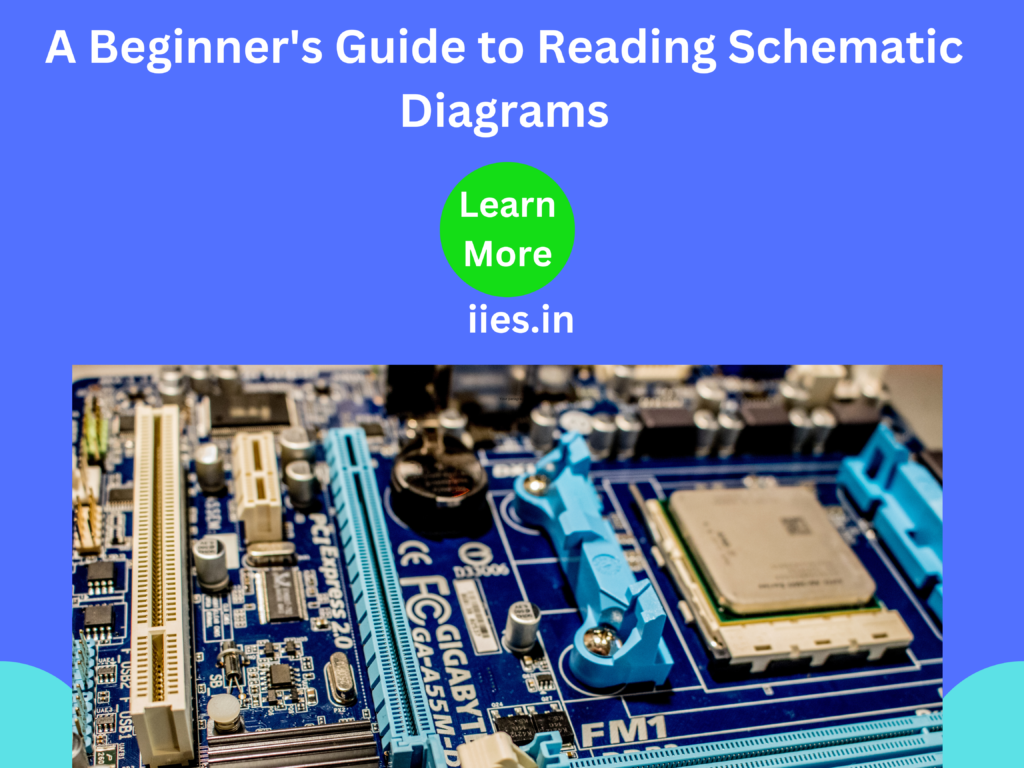
Schematic diagrams are the blueprints of electronic circuits, visually representing how components are connected and interact. Whether you’re an electronics enthusiast, a student, or a DIY hobbyist, understanding these diagrams is essential for building, troubleshooting, and designing circuits.
This guide will introduce you to:
By mastering the fundamentals of schematics, you’ll gain the confidence to read and create your own circuit diagrams. Let’s dive into the world of electronics!
An electronic circuit’s connections between components, values, and cooperative behavior are depicted visually in a schematic diagram. Anyone interested in building or troubleshooting electronic circuits must be able to read a schematic. The fundamentals of reading and interpreting a schematic diagram will be covered in this guide.
Elements Electronic components are represented by various symbols in schematic diagrams. These parts may include diodes, transistors, resistors, capacitors, and more. A schematic uses distinct symbols to represent each component.
Typical Elements and Their Signs
Resistor: A rectangle (for variable resistors) or a zigzag line. Usually, the value (for example, 10kΩ) is written next to the component.
A capacitor consists of two parallel lines, one of which is curved in the case of electrolytic capacitors or two parallel lines that are straight in the case of ceramic capacitors. Next to it is the capacitance value (e.g., 100µF).
A triangle pointing in the direction of a line is a diode. It may also indicate the type of diode (e.g., Zener diode, LED).
For NPN or PNP types, a transistor is a symbol with three leads (emitter, base, and collector) depicted by a circle with arrows.
Battery: A series of parallel lines, both long and short. The positive terminal is shown by the bigger terminal, and the negative terminal is shown by the smaller terminal.
Connections to the Power Supply
Positive (+) and negative (-) terminals are used to represent power supplies. The ground or negative side is at the bottom of many schematics, while the positive side is frequently at the top.
Electrical connections between components are represented by lines in a schematic. These lines illustrate how parts are connected to form an entire circuit.
Recognizing Relationships Solid lines: Show that two parts are directly connected.
Points of intersection: The intersection of two or more lines monitoring a connection. The lines are not connected if they do not meet at a dot. To indicate that lines are in fact connected, a dot is used.
Power rails and buses are frequently utilized for shared connections. The +5V rail, for example, might be represented by a power bus, and the circuit’s common ground by a ground bus.
Lines Crossed
Two lines are not connected if they cross without a dot at the intersection. The lines are connected if there is a dot.
Values are typically printed next to the majority of components in a schematic. When putting the circuit together or troubleshooting it, these values are crucial because they show the electrical characteristics of the component.
The resistors The letter suffixes k (kilo-ohms, 1k = 1,000Ω) or M (mega-ohms, 1M = 1,000,000Ω) can be used to display the value, which is typically expressed in ohms (Ω).
Capacitors: Picofarads (pF), nanofarads (nF), or microfarads (µF) are used to express the value. Transistors and Diodes: occasionally marked with a part number (for example, 2N2222 for an NPN transistor or 1N4007 for a diode).
The power supply is usually depicted in a schematic by a symbol that displays the positive and negative terminals, frequently along with a voltage indication. In order to represent a common reference point for the entire circuit, ground is typically represented by a series of horizontal lines, occasionally arranged in a downward cascade.
Ground: The label “GND” or a series of three descending lines, each shorter than the one before it, are used to indicate ground.
Source of Power: A sequence of long and short lines indicates a battery or voltage source. The positive terminal is shown by the long line, and the negative terminal is shown by the short line.
Arrows show the direction of current flow in a schematic, especially for parts like transistors or diodes. Diodes, for instance, only allowing the current to passing from the anode to the cathode
Diodes: The diode symbol’s triangle indicates which way current flows.
Transistors: The direction of the current flow between the emitter and base is indicated by the arrow on a transistor symbol.
First example: Basic LED Circuit
This is how a basic schematic for a basic LED circuit might appear: A resistor is connected to a power source, such as a battery. After that, an LED is connected to the resistor and then back to ground. Interpretation: The resistor prevents the LED from burning out by limiting the current passing through it, while the battery supplies power.
Second Example: Simple Transistor Switch
A transistor switch circuit could consist of: An NPN transistor, a resistor, and a power source. The transistor’s collector is connected to a load, such as a light bulb or motor, and its base is connected to a switch.
Interpretation: The transistor is turned on when the switch is closed, allowing current to flow from the collector to the emitter and powering the load.
Let’s start with the power source: Recognize how power enters the circuit and moves through its various parts.
Determine the ground: Locate the ground symbol to assist you in tracking the current’s return path. Observe the links: As you go through the parts, try to figure out how they are related.
Make use of the following resources: If you have questions concerning specific symbols or parts, consult datasheets or online libraries.
At first, reading schematic diagrams might seem difficult, but it gets much simpler with practice. Reading and even making your own circuit diagrams will be possible if you comprehend the values, connections, and symbols of the components. As you gain experience, progress to more complex projects from starting small with basic circuits!
Must Read: STM32 ADC: Analog Sensor Reading
Indian Institute of Embedded Systems – IIES